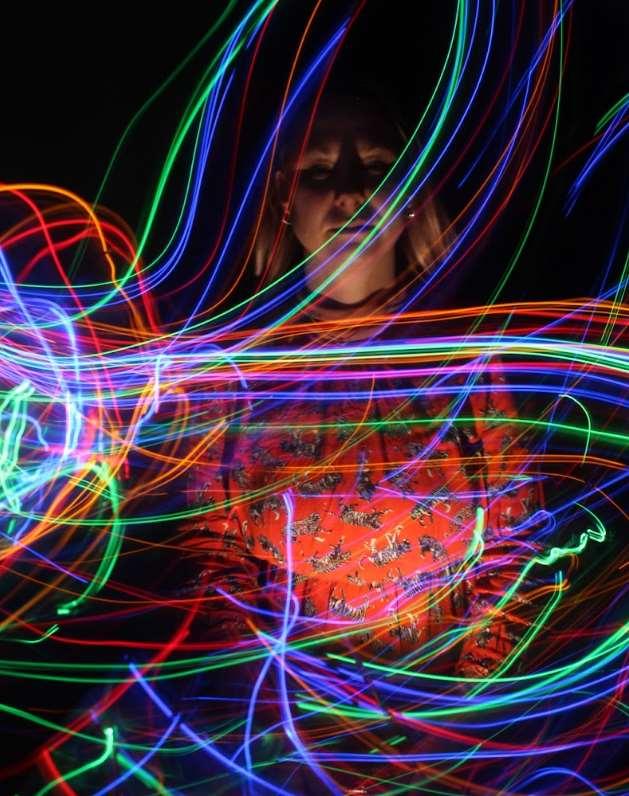
Newsletter 2 2023-24
Inclusion – celebrating differences’
UBATO
‘

• February UBATO CPD workshop……..............................Page 3-6 • Interview with artist Annie Soudain.................................Page 8-9 • Celebrating Women in Art…………….…………………Page 10-13 • Engaging Boys in Art…………………………………….Page 14-15 • Artist of The Month…………………………………...……….Page 16 • UBATO Artist teacher residential trip to St.Ives..….Page 17 – 24 • Bantridge School, teaching Art in a SEND school...Page 25 – 27 • Dyslexia Postcard Series………………………………Page 28 – 29 • Tips on creating an inclusive classroom...........................Page 30 • Neurodiverse artists……………………………..….............. Page 31 • Utilising doodle books……………...…..……………….Page 32 - 33 • Same Sky and the Brighton childrens parade……….page 34 -35 • Supporting EAL students in art….….………….……….page 36-37 • Hastings Contemporary, support inclusion……….….page 38-39 • Supporting LGBTQ+ students in school.…………..….page 45-51 • De La Warr Pavilion speak about Inclusion…….….…..page 42-45 • Race and Inclusion …………………………...……….…..page 47-49 • Coming up …………………………...…………....page 46,49 and 50 Contents

Our latest CPD workshop highlights
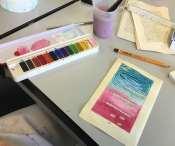



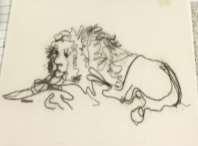





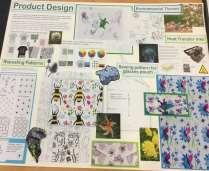

3
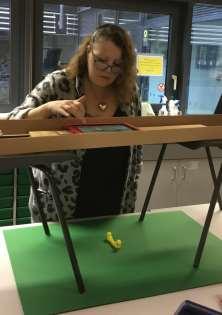





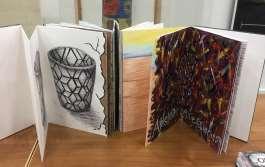

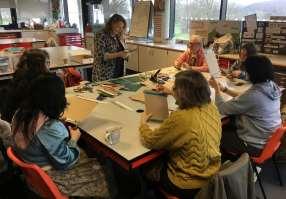


4



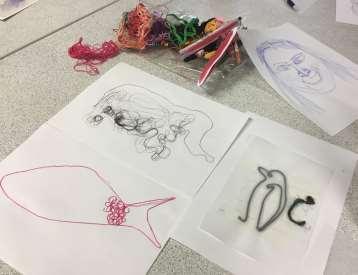





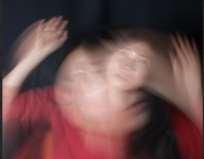

5




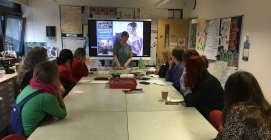

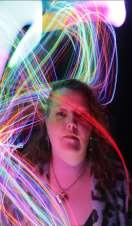




6


Don’t forget to spend your unique UBATO £25 off voucher Dryad Art Materials.
(you need to input your unique UBATO member code) The £25 voucher runs out on 31st March
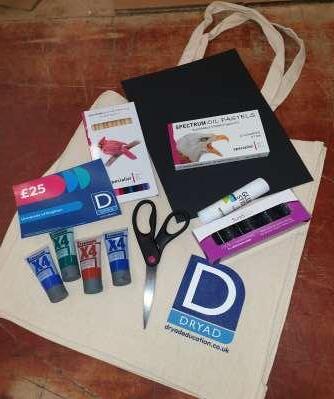
7
Interview with the local artist
Annie Soudain – by Tara Finnegan
Introduction of Annie Soudain: I would like to introduce you to one of my favourite Sussex artists, Annie Soudain, Annie is a full-time professional artist and retired secondary school art teacher. Most recently with shows at the De La Warr, Sussex Guild and the Rye Harbour Nature Reserve. Born near Dover in Kent, Annie spent her early years in the picturesque landscapes of Truro, Cornwall. Her Lino prints offer a window into the breathtaking landscapes of the South Downs, where she currently resides. Carefully carved lino blocks translate into prints that convey a rich tapestry of rolling hills, meandering rivers, and charming countryside.
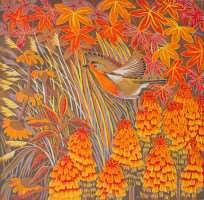
My name is Tara Finnegan, I am a painter originally from Northern Ireland, and Annie's work was one of the first Sussex artists I stumbled upon. Annie’s work invites viewers to immerse themselves in the timeless beauty that is the breathtaking South Downs as seen through her discerning eyes and effortlessly skilled hands. She exhibits regularly throughout the year so keep an eye out and you might be lucky enough to see her work in person!

Q1. Annie, many artists have fond childhood memories of their first experiences with art. Could you share a cherished childhood art memory that had a lasting impact on your creative journey and the artist you’ve become today?
AS. “I've really enjoyed drawing from an early age. At my primary school my class took part in a competition to promote safety in the home. I painted a fireguard with clothes alight on it which I won a prize for, a book “Flower Fairies of the Autumn”. I loved the illustrations which were botanically correct and had poems full of relevant detail. I had to choose a poem to learn by heart and chose, The Song of the Crab Apple Fairy,
“Crab-apples, Crab-apples, out in the wood, Little and bitter, yet little and good!
The apples in orchards, so rosy and fine, Are children of wild little apples like mine”
website: www.anniesoudain.co.uk
8
Q2. As you look back on your career in education, Annie, are there any key advice or lessons learned that you’d like to share with other art teachers and educators?
AS. I think joining an art group helped me. I always managed to produce some work but having a summer exhibition to take part in gave me a deadline to work too. I joined the Rye Society of Artists and am still a member!

Q3. Annie, the people in our lives often play a significant role in inspiring and shaping our creative journeys. Can you share how individuals have helped support or inspire your career
AS. My Art teacher was the first person who suggested I should consider training in art. My parents were horrified at the thought. After visiting the Art College in Canterbury with me they reluctantly agreed to let me go.
Q4. Annie, your art is inspired by the landscape. Could you describe how the natural surroundings influence your work, and also, can you provide insights into your process for planning and preparing your artistic projects that draw from this inspiration?
I have always drawn whatever is nearby and I have always been lucky to find inspiration nearby. I'm using my work to illustrate a book I'm writing about my life and work and realise that has been the pattern I've followed.

Q5. Annie, as you’ve had a remarkable career in Art. I'm curious to know what plans you have next; can you share any exciting projects or directions you’re considering?
At the moment I'm enjoying working on the reduction Lino prints but I do have several unfinished projects piled on one end of my table in my studio. When lockdown happened and days loomed ahead, I thought it would be a good opportunity to complete them. I did finish some, others are still there!
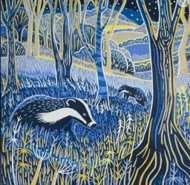
9

HAPPY INTERNATIONAL WOMEN's DAY- ‘My School of Education Sisters!’
– Joanne Smith, of The University of Brighton speaks out.
Big thanks to those of you who made it to the SHEROES workshop, take a look at the postcards (displayed on two of the huts in the Atrium) created to celebrate the unsung sheroes in our lives. Others were encouraged to use the blank postcards provided and add your own Sheroes to the display, which will stay up for the next few weeks. It goes without saying that the women in the School of Education are a truly fabulous bunch!
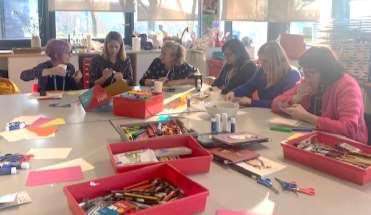

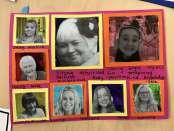
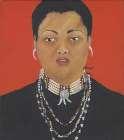


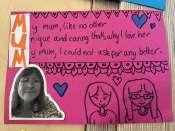
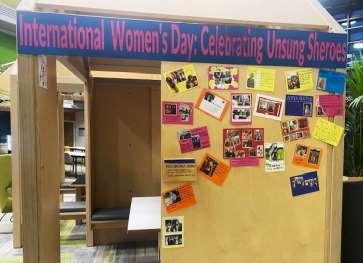
Women in Revolt – Tate Britain until 7th April
Women In Revolt! | Tate Britain 10
Celebrating Women Artists in our curriculum

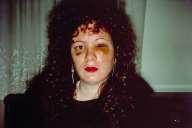

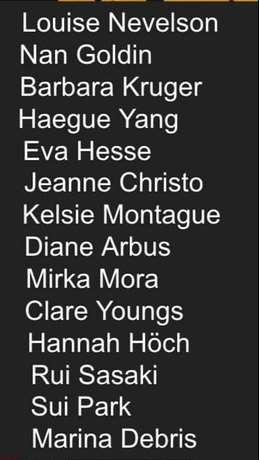


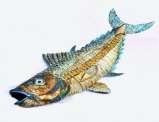



Jenny Saville
Sarah Lucas
Val Hunt
Claudette Johnson
Rachel Whiteread
Gillian Wearing
Audrey Walker
Barbara Hepworth
Rita Keegan
Hilma Af Klint
Natalia Goncharova
Elaine Reichek
Helen Chadwick
Judy Chicago




3 11
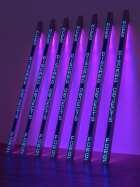



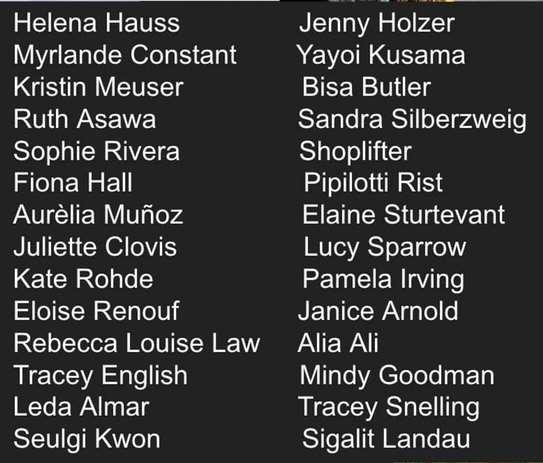

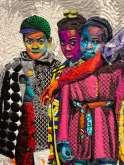



12
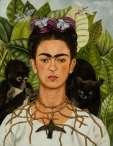


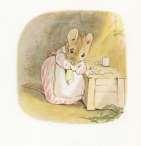
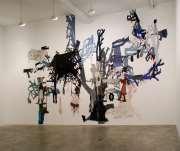

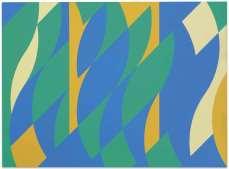



13
Engaging Boys in Art Lessons
– Jael O’Connor, Littlehampton Academy.
During December and January, I had the opportunity to participate in Susan Coles’ excellent CPD training “Finding Parity in the Art Craft Design Curriculum: Where Have All The Boys Gone?”.
I have been teaching GCSE and A Level art and Design as well as Graphic Communication for a long time and the issue that has always concerned me is the engagement of boys in the creative subjects Graphics was never much of a problem, but Art (Fine Art especially) was always tricky.
I decided that this year I would join Susan’s CPD as I know she is an expert in this field, and I was not disappointed. Susan’s sessions were informative and filled with case studies of projects that engaged boys and enabled them to find success and enthusiasm for the subject
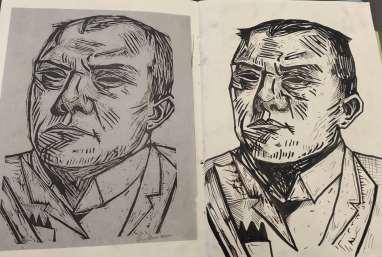
One of the key takeaways from the sessions was that boys will often respond to techniques that are process based, or that involve problem solving. I decided to try linocut printing, as this is very methodical and each stage can bring small steps of success which can help to engage students.

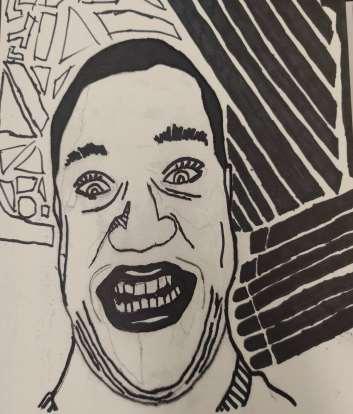 1.Copy
1.Copy
of German Expressionist work
14
2.
Drawing from own photo with marker pen


Carved lino tile Finished Lino print
We chose to look at German Expressionism and portraiture. The students started off taking photos either of themselves or their friends Some decided to try and use facial expressions to convey emotion. They then chose their image to work from and drew a version of it using black marker pen. They tried to emulate the dramatic contrast and exaggerated appearance that is seen in German Expressionism.


They then transferred the image onto lino and learned to cut away the correct sections. The boys in particular seemed to enjoy the carving process and said they found it quite therapeutic, and took great care to carve neatly. I taught them how to do the printing part of the process and their surprise and delight at how their prints looked when revealed was very rewarding They were proud and excited by how the images looked when produced in this way.
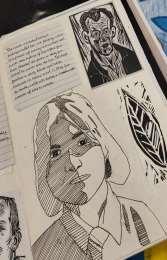


I think that the process of breaking the method down into steps that they could follow, and how dramatic the prints looked created enthusiasm and engagement that some of them hadn’t had before. It boosted their confidence and their engagement in the subject improved

‘I would highly recommend any CPD with Susan Coles, but this one in particular has been fantastic!’
15
Portslade - ‘Artist of the Month’,
written by Penny Bayley
The Artist of the Month lessons are a great way to integrate techniques, art history and discussions about diversity all at once. Our showcased artists cover a wide range of styles and backgrounds, including classics such as Breughel and Seurat, artists with disabilities such as Aida Ashall and Henry Frazer and artists from disadvantaged backgrounds like Marcus Cadman and Helen Zughaib. This diversity in our profiled artists helps to challenge stereotypes about who can be an artist and gives the children have an opportunity to delve deeper into the lives and styles of artists that they would not necessarily hear about.
Year 1

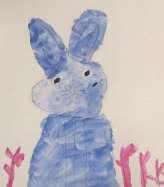
Each month a prepared lesson is given to class teachers to use anytime in their planning. The one-page plan includes a short biography, pictures of the artist, some of their work and questions to ask and explore in more detail. Class teachers decide on a piece of work for the students to complete in the style of the artist, depending on the age and ability.



February’s artist of the month this year was Henry Frazer. After learning about Henry’s disability and artworks, students were challenged to create a picture of an animal in strange colours using different mediums. The children’s work is shared with their families through the school newsletter, encouraging children to talk about art at home and extend their learning via visiting galleries.
Year 5
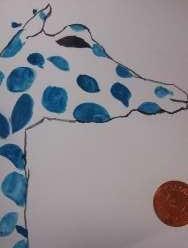
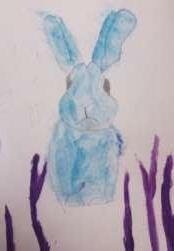

St Mary’s Catholic Primary,
Year 3
16
Henry Fraser Art - Mouth Artist
UBATO Artist teacher
residential to St.Ives
12th – 15th
February 2024




Breaking up the long drive to Cornwall, with a sunny lunch spot at West Bay, Dorset.



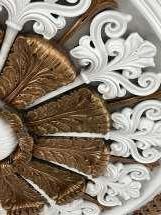

Arriving in St.Ives to sunshine, followed by a beautiful sunset over the harbour. The first evening we were joined at the hostel, by local folk singer Nicole Tesseyman who got us singing and writing our own sea shanty.




17




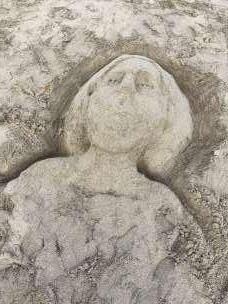
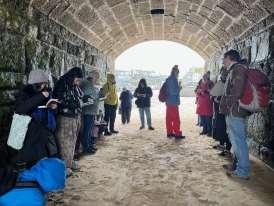


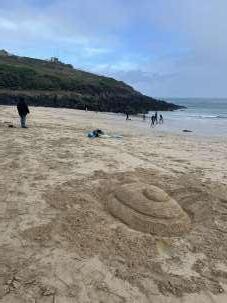
Day 1 We had a sketchbook tour around St.Ives, followed by a sand sculptures workshop with Greg Humphries
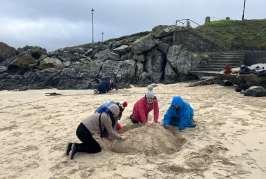

18


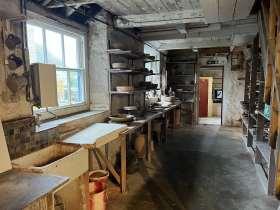

Visit and tour of Leach Pottery in the afternoon .






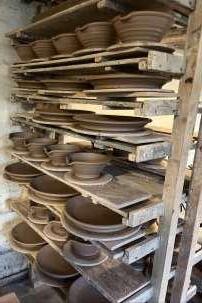


19




Independent time to explore the beautiful scenery and complete some of our sketchbook challenges given by each other.


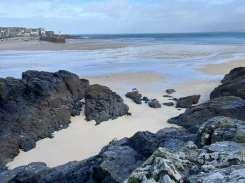

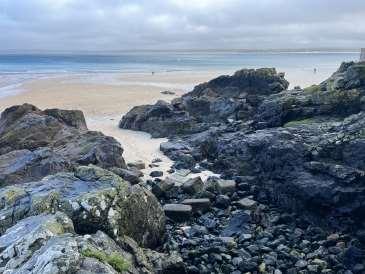
20

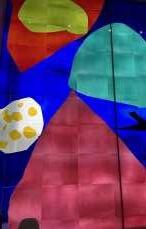
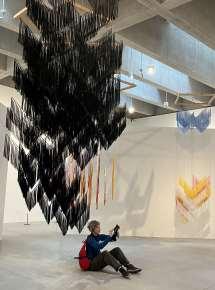
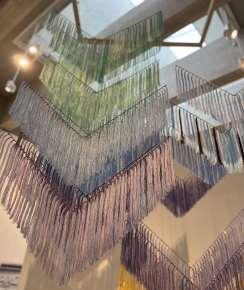



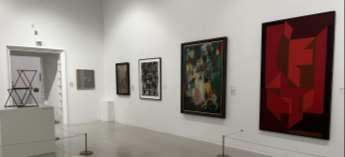
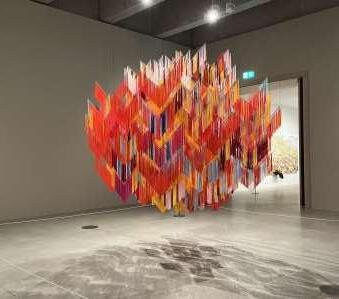
Day 2 In the morning we had a talk at Tate St.Ives about the permanent display with time to view the temporary exhibition.
21










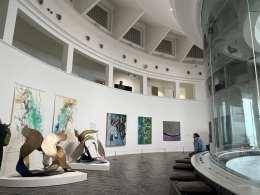
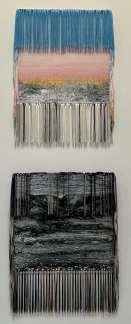
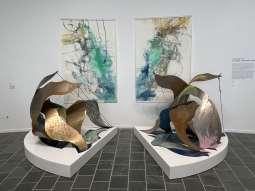

22





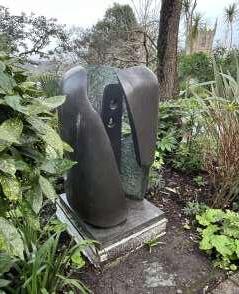
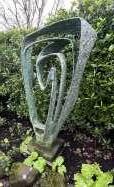
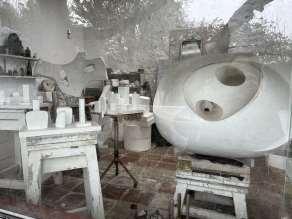
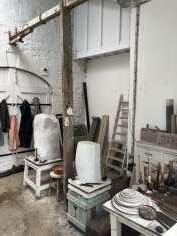


23
The afternoon was spent at The Barbara Hepworth studio and gardens.


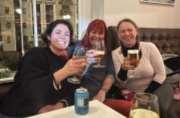


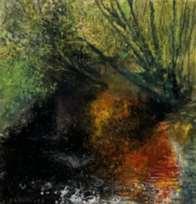


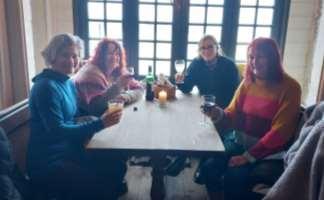
Before returning to the South East, a few of us visited The Kurt Jackson Foundation

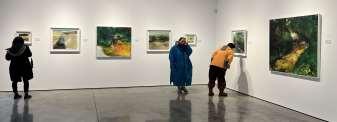
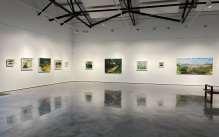



24
Sam Lyons at Bantridge School schools speaks about what inclusion means to her as an art teacher in her SEND school.
Teaching is challenging in all schools but particularly in SEND schools where specific needs and behavioural challenges are faced by all pupils. Brantridge School is a small primary SEND school for boys with SEMH (social emotional and mental health) needs, many with ASD (autistic spectrum disorder) PDA and ADHD based in West Sussex. All pupils have an EHCP (Education Health Care plan) and most have been excluded from their mainstream setting.
Using drama and dress up and be the character to inspire your writing
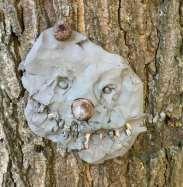
Don’t be afraid to take a lesson outside

Most of our pupils lack self-confidence and self-belief, they have felt rejected by their previous educational settings, little wonder that they come to us unable to put themselves out there and challenge themselves artistically.
Historically, as a school we lacked vision and commitment in our art provision, we thought long and hard about how to improve this and we decided to go for ArtsMark and to use this to drive our teaching of the arts in our school by combining this with a trauma informed approach to offer immersive, cross curricular lessons that engage all learning styles.
Learn Geography through the medium of clay
Here students have been learning about Cappadocia in Turkey
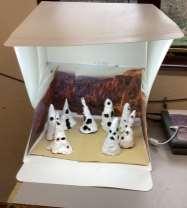
We led plenty of varied CPD to train staff to deliver a new focus with the arts at its heart because like many primary schools, many teachers were not art specialists. We started to use music and drama to bring lessons to life and of course, we harnessed visual arts to engage our boys in a new and exciting active learningbased curriculum to meet their needs and encourage them to take risks and challenge themselves.
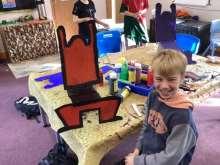
Learn about famous artists through DT and art as these boys did by making Keith Haring inspired chairs
25
We regularly hold whole school topic days with an arts focus as well as a dedicated arts week every June where we try to invite many and varied art specialists in to school to expose our students to as many different genres and styles as possible.


It doesn’t matter where they do their work- as long as they are engaged!
As with all teaching, in SEND you need to be inventive, playful, adaptable and flexible and trust in the process. The main focus for us is for the students to enjoy their learning journey, develop the confidence to try new things and to develop resilience.

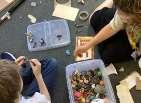

Use a variety of different mediums- here these pupils are experimenting with 3D pens

As part of this year’s The Big Draw, We created an art exhibition showcasing art made using our senses: Sight, sound, touch and smell.
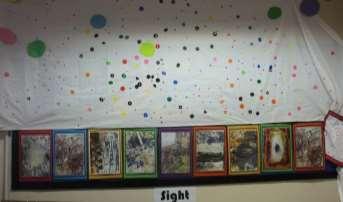

We were incredibly proud to be awarded a silver ArtsMark award and plan to go for gold in the future.

26
Sam’s Top tips to teaching Art in SEND
1) Be adaptable- re ready to dynamically adapt your lesson, have confidence, take your lesson outside if you think it will engage your learners and meet their needs- let them sit under the table- its fine!

Don’t forget the digital arts! Kids love combining their love of technology with art to create characters and images. This helps them to visualise potential future careers!
2) Be prepared- over plan, and be prepared for all eventualities, things go wrong, things change if you feel that things are going off track, don’t be afraid to stop, re-group and adapt, have a movement break, then bring back to the lesson. Don’t forget to consider sensory needs- have gloves on hand, ear defenders, fidget toys.

Sometimes the best results come from just playing! Here pupils are working together, taking turns, learning to strengthen their creation, learning about balance, shape and form- without even realising that they are learning.

3) Don’t take things personally- SEND students might lash out verbally or physically- it is not aimed at you personally, its their reaction to their immediate emotions and current needs.

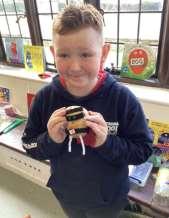
4) Build relationships- get to know your students, know their interests, likes, dislikes- avoid known triggers.

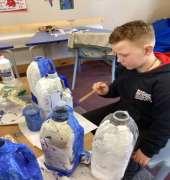 Creating willow sculptures for our parade
Using re-cycled materials
Creating willow sculptures for our parade
Using re-cycled materials
27
Julie Howard speaks about her Dyslexia postcard series.
The Postcards | Dyslexia Postcards (dyslexiapostcardseries.com)

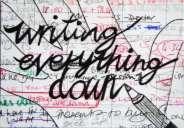
At the beginning of January 2022, I decided to create a series of postcards, that explore the challenges we face as a family coming to terms with dyslexia. My ultimate aim for the project was to process how I feel about getting my dyslexia diagnosis as an adult. This was accompanied by trying to support my daughter at as she faces challenges at school and in life.

A recent loss of my mother, meant we were also witnessing more of my father’s struggles with dyslexia, that were more exposed by the loss of my mother’s support. A closer connection with my sister was also important to recognise through a mutual interest and shared experience of dyslexia challenges and triumphs. I wanted to gain more knowledge on how we all found coping mechanisms throughout our lives.
The concepts behind the artwork on the postcards, was just as important, if not more important than the visual artwork itself. The postcards were connecting us and prompting discussions between us, which normalised our associations with the learning difference. The artwork utilised my strengths of visual communication and creativity to communicate each individual concept. the artwork on the postcards themselves illustrate the positive and negative aspects of living with dyslexia.

I started the year aiming to create 1 postcard a week, making 52 by the end of the year. However, I have felt inspired by creating the series, it has really helped me process my own understanding of it all and the way my brain works, as well as seeing how we could share this understanding in the family and not hide our weaknesses any longer as a painful embarrassment and one to be ashamed of.
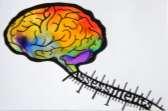

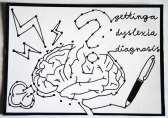

28
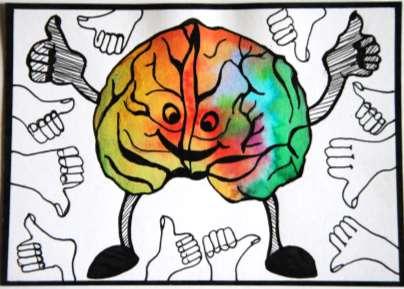
By recognising the positive as well as the negative challenges we have come across and overcome as a family with dyslexia, it has actually raised awareness from family and friends around us. I was able to complete a series of 100 postcards in the 12 months.
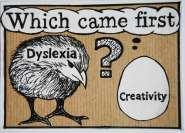

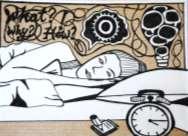
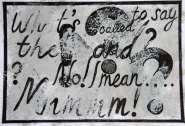


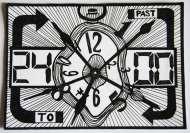

Throughout the year, we have not only shared our experiences with dyslexia amongst ourselves, but we provoked discussions with others and now then wanted to share these postcards with a wider audience.
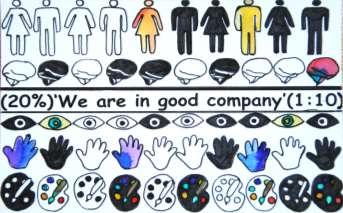
For over 20 years I have been an art educator. Teaching art to all age groups from preschool children to adults, which has led me to my privileged position of being a senior lecturer at University of Brighton, training art teachers. The knowledge and understanding I have gained through doing this personal project has not only benefitted my family, but has had a huge impact on my professional work in education. I am excited to be sharing this series of concepts with a wider audience amongst other educators to raise awareness and shared understanding of what living with dyslexia really means.

29
To see the whole postcard series and read the explanations, please visit the website The Postcards | Dyslexia Postcards (dyslexiapostcardseries.com)
5 top tips to creating a more inclusive classroom –
Julie Howard
‘People interact with the world around them in many different ways: there is no one right way of thinking learning and behaving’ Baumer & Frush 2021.
I was lucky enough to attend The Dyslexia show held at The Birmingham NEC in March and participated in a workshop run by Nasen on creating an inclusive classroom. I am sharing my top 5 take aways from the workshop

1) Employing a student centred approach to our teaching practice, from planning to our delivery.
2) Consider student learning differences, rather than difficulties Shifting from a learning culture of seeing it as a deficit to looking at the individual uniqueness and celebrating differences as a positive will help everyone. Bring back the joy of learning for everyone

4) Look beyond the labels and don’t assume it is the same learning experience for everyone, even with the same identification.
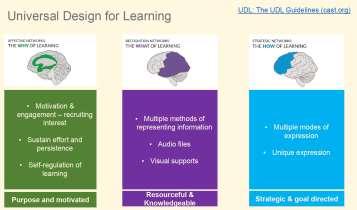
5) By making your planning accessible for everyone right from the start, it benefits every learner. Using the Universal Design for Learning model. We can consider the why?, what? And How? elements of a lesson or scheme of learning , so that our classroom environment is accessible for everyone.
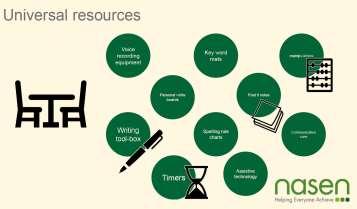
3) Notice the individuals and aim to build in opportunities in the curriculum for everyone to highlight their strengths.
For further teaching resources and information on inclusive classrooms.
30
Nasen
Home page |
Neurodiverse Artists
Neurodiverse Artists and good links to projects in school (padlet.com)









Stephen is able to observe a city scape once and then record it with incredible accuracy and detail





Please continue to add to this Padlet and build up a resource we can all access in the future.
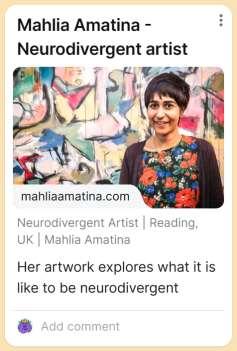




31
Trainee Teacher Libby Francis –
Spoke at the Art and Design ITE conference about ‘The Importance of Doodle books and their use alongside Sketchbooks in KS3.’ based on her experience at The Forest School.
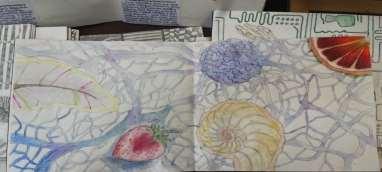
‘A sketchbook can act as an illustrated diary, a visual record of a journey, or as a starting point for more developed work.’ Rhodes (2018)

My own personal experiences as an artistpersonal tool - a place to experiment, record, shape thoughts, refine ideas and concepts, a safe space showing the progression of a project

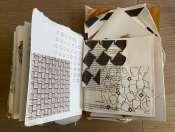

First hand experience of how sketchbooks are often used at KS3,
● KS3 sketchbook layout
● Artist research
● Preparation for GCSE, can lead to books being over prescribed and lack an opportunity for creativity to be explored.


The Forest School introduced the idea of using Doodle Books, inspired by Mr Doodle for all year 7 and 8 students.
● Doodle books are displayed around the classroom just as sketchbooks are
● Always encouraged to explore what students want.
● Encourages imaginative play and creativity.
● Used as a starter activity
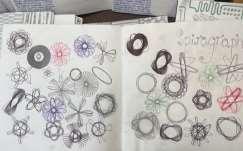

32




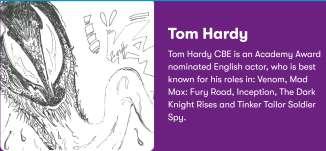
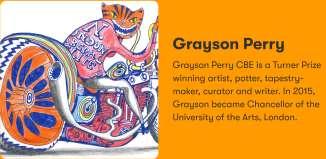
Can you make more of doodling in your art lessons?
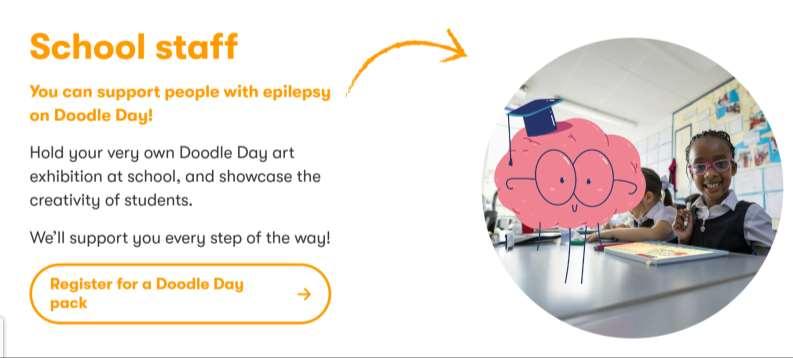
Doodle Day - Epilepsy Action
33
SameSky partnership with the University of Brighton, benefitting local schools and
studentteachers
Anewpartnershipwithcommunity-led arts organisation SameSky is providing even more opportunities for our studentteacherstoworkwithschools. SameSky is an award-winning communityartscharityandbehindthe amazing sculptures seen at events including the Brighton Festival Children’s Parade and Burning the Clocks. During March, SameSky used the UniversityofBrighton’sFalmercampus as a base for producing their largescale sculptures with participating schools,whichwillbeparadedthrough thestreetsofBrightonon4Mayatthe Children’sParade.



Art lecturer Netty Cullen said: “I discovered that the venue that SameSky had used for delivering workshops was no longer available, so I explored the possibility our using our Falmer campus. After measuring external doors to ensure the huge, finished structures could exit and be deliveredbacktothe schools we were delighted to be able tosayyes. ”
The Childrens Parade is on Saturday 4th May.
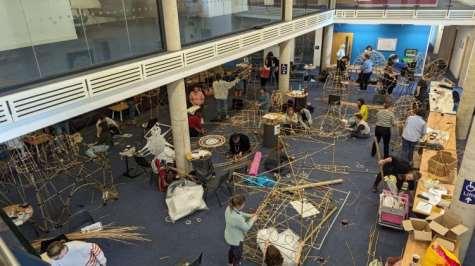
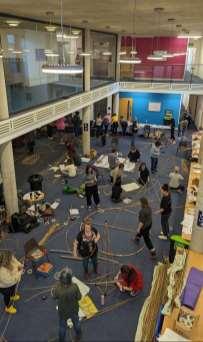
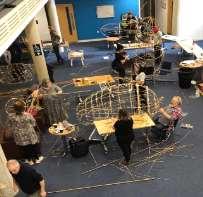
Students on our undergraduate BA Hons primary teaching degrees will be taking part in a bespoke workshop with SameSky in April and many will also be taking partinthe parade with their placement schools., involving engagement with teachers,pupilsandparents.
34
Students on our Art and Design PGCE are currently working alongside SameSky artists andschoolswhichishelpingtoimprovetheir subject knowledge. Many of the schools taking part in the workshops have had our student teachers and many of the teachers attending had trained at Brighton and were excitedtobeback.



One of the aims of the partnership is to familiarise the student teachers with the Children’s Parade, which is a unique part of nearly every Brighton & Hove school child’s experience,andoftentheonlywaythatsome schoolsandchildrenengagewiththecultural provision of our city. It will also serve as an introduction to the process of building large structures out of willow (withies) with professional artists and teachers from our partnershipschools.
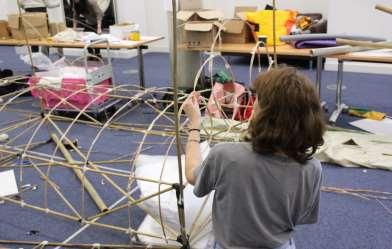
Nettyadded:“Ihopethiswillbejustoneof manynewpartnershipsbetweenourcourses andlocalculturalproviders.”

Secondary student teacher Estelle said: “As a trainee, the Same Sky workshops not only gave me the opportunity to develop my knowledge and skills in makinglargescalesculpturalworkswith withies, but it also gave me the chance to work alongside experienced, professional artists and local art teachers.

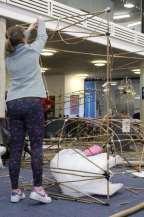
“I gained a personal and first-hand experience of different schools’ art & design provision and departments. Talking whilst making, in an informal, relaxed way was so valuable and I’m really looking forward to being part of suchaniconiceventthatinvolvesschools andchildreninthecity.”
WearealsoexploringhowSameSky artistscanworkwithUBATOinthefuture too.
35
International Art and Design
PGCE student Ha Dongaespoke at our ITE conference about how, as art teachers, we need to raise our awareness of EAL student understanding in our subject and what we can do to support students further.
Why is this important?
Teaching Standard 5 …refers to teachers having a clear understanding of the needs of all pupils, including those with English as an Additonal language: and be able to use and evaluate distinctive teaching approaches to engage and support them.
Ha states that the label EAL on its own is unhelpful, as it is an umbrella term used to describe pupils who are….’exposed to another language at home that is known or believed to be other than English, and so are deemed to be learning English as an Additonal Language.’ DfE, 2020.
It doesn’t indicate their level of English and what support they will require in order to be able to access and understand the work presented to them. The table below gives a teacher a better indication of a student’s English proficiency.
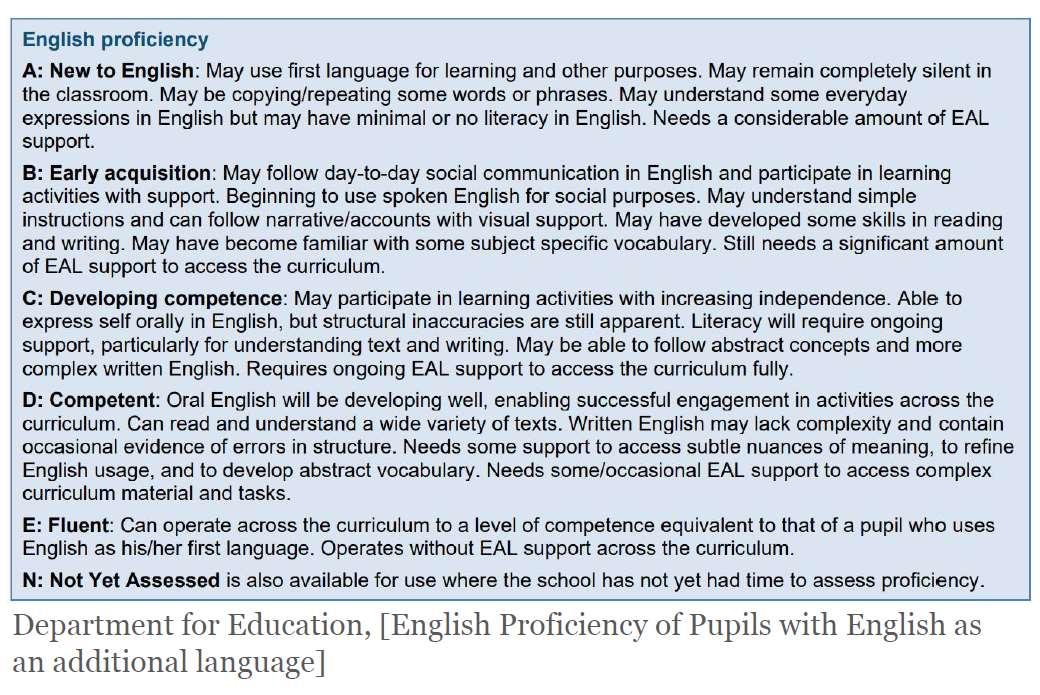
36
Ha questions whether EAL students know what they are learning in every lesson. Is it possible that EAL students are appearing to achieve the academic learning outcomes of a lesson, without truly understanding or achieving the learning objectives? How are we as teachers checking their full understanding?
Teachers are supporting students by planning for inclusion. Using strategies such as dual coding, scaffolding the learning in the lesson into achievable chunks. Modelling by demonstrating techniques in front of students and by observing them visually. These are all good for enabling all students to achieve successful learning outcomes But is this enough for EAL students?
Are we checking their specialist vocabulary, their understanding of keywords and academic knowledge?
How can art teachers support EAL students in the Art classroom? – This is about ensuring that EAL students have opportunities to learn new vocabularies and to practice using them.



37

38
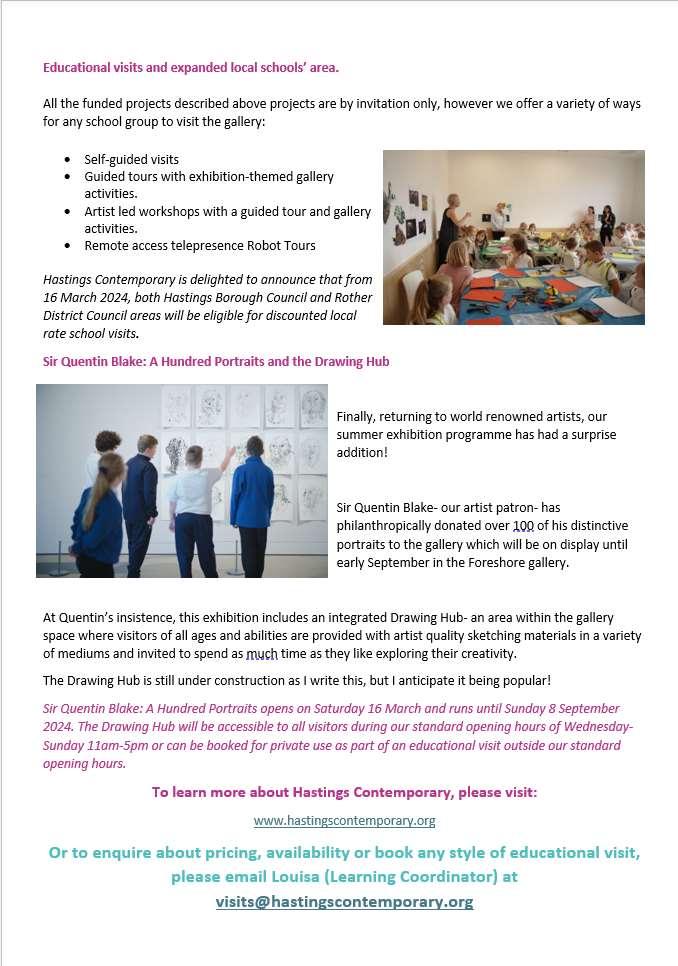
www.hastingscontemporary.org
Or to enquire about pricing, availability or book any style of educational visit, please email Louisa (Learning Coordinator)
at visits@hastingscontemporary.org
39









& colleges | Stonewall 40
Allsorts Youth Project Schools
Artists who would associate themselves with the LGBTQ+ community
Artists who would associate themselves with the LGBTQ+ community (padlet.com)





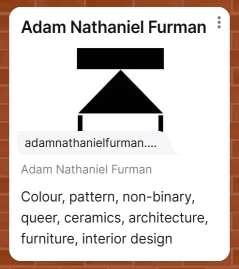

41 Please continue to add to this Padlet and build up a resource we can all access in the future.

42

43 Learning & Participation programme at the De La Warr Pavilion (dlwp.com)

44

45
3

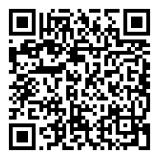
46
Visualise: Race & Inclusion in Secondary School Art Education
New report by Runnymede Trust
The Runnymede Trust and Freelands Foundation publish a landmark research commission into race and inclusion in art education following three years of partnership
‘Visualise: race and inclusion in art education’ is a new report examining the current state of race in art education in England, confirming what art educators have been saying for years: that art education is at crisis point. Despite their best efforts, teachers and students are rooted in an education system that is failing to nurture diverse art practices.
The research exposes significant underrepresentation of minority ethnic artists in school curricula. Only 8.4% of artists referenced in exam assessment materials are minority ethnic, and just 2.3% of artists referenced in GCSE Art papers are from Black (1.54%) or South Asian (0.74%) backgrounds.
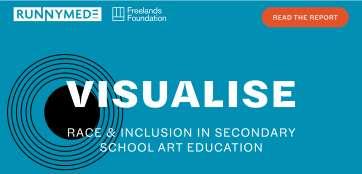
The project found a strong desire amongst teachers and students to diversify teaching content and improve experiences of art education for all. But teachers are under pressure, overworked and under-resourced, and art education in schools remains overwhelmingly narrow in terms of curriculum content and exam assessment. Browse the 'Visualise' website below, or download the full report as PDF.
For further questions, email visualise@freelandsfoundation.co.uk

Key findings include:
•Just 2.3% of artists named in GCSE Art exam papers are from Black (1.54%) or South Asian (0.74%) backgrounds.
•Students expressed a strong desire to study a broader art curriculum, with nearly two thirds (66%) of secondary school students wanting to study artists from a wider range of ethnic backgrounds, rising to 80% among Black students.
•Teachers lack confidence and resources, with a third of teachers having never encountered the work of any minority ethnic artists in their own education, and 90% of teachers surveyed saying that supplementary teaching resources dedicated to the work of minority ethnic artists would aid their teaching.


47
Artists who would associate themselves as black or from minority groups.
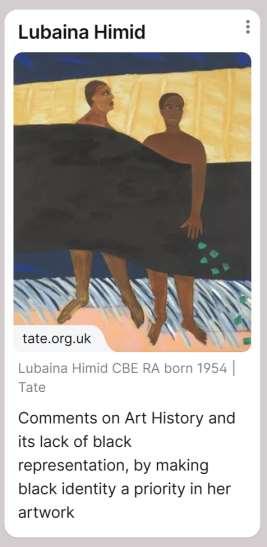







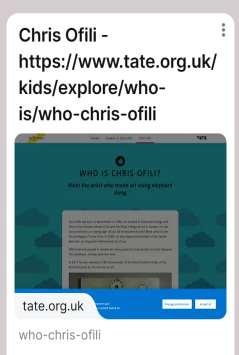


Please continue to add to this Padlet and build up a resource we can all access in the future.
Artists who associate themselves as black or from minority groups
(padlet.com)
48

UBATO CPD WORKSHOP 6 July 24 | University of Brighton Online Store
Jon Edgar - British artist using improvisation in his practice, which tends to the figurative.
Large public stone carvings worked on location using local people contrast with intensive clay portrait sketches of interesting sitters.
Teaching and communal working is an important part of his practice.
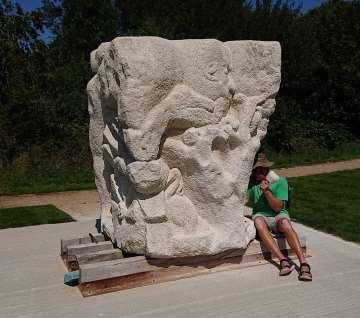

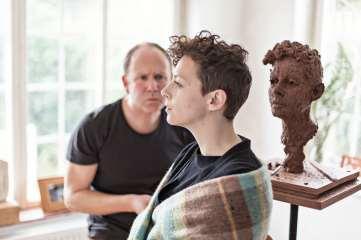
Jon teaches sculpture in a variety of media and techniques at West Dean College and has taught at the University of Sussex.
He is keen to share his expertise and experience of working in 3d materials with you as artists and as an educator, he will introduce a broad range of 3d approaches that you will have the opportunity to experience and then discuss how you can introduce them in the classroom.
Instagram @thejonedgar
https://artuk.org/discover/artworks/view_as/grid
/search/keyword:jon-edgar--makers:jon-edgarb1968
US FOR Sculptor Jon
on
JOIN
Edgar
Saturday 6th July 2024 Tickets will also be sold separately for this event at £60 each.
49

Bhasvic are looking for 2 teachers to join their Visual Arts Department, these are both full time, permanent positions to teach Photography and Graphics
The deadline for receipt of applications is9am Monday 22 April 2024
Working for Us (bhasvic.ac.uk)
New The UBATO Forum
.

We look forward to seeing you all at the next CPD workshop on Saturday May 18th 2024
Please note, this date is not attached to half term in the majority of schools.
By request, at the next UBATO Forum, we will discuss and share
‘What extra-curricular art activities do you offer in your school and how do you deliver them?’
We will also discuss next years workshop dates / format and residential plans for 2024 / 2025
How to join | University of Brighton Art Teachers Organisation

50






































































































 1.Copy
1.Copy


































































































































 Creating willow sculptures for our parade
Using re-cycled materials
Creating willow sculptures for our parade
Using re-cycled materials























































































































